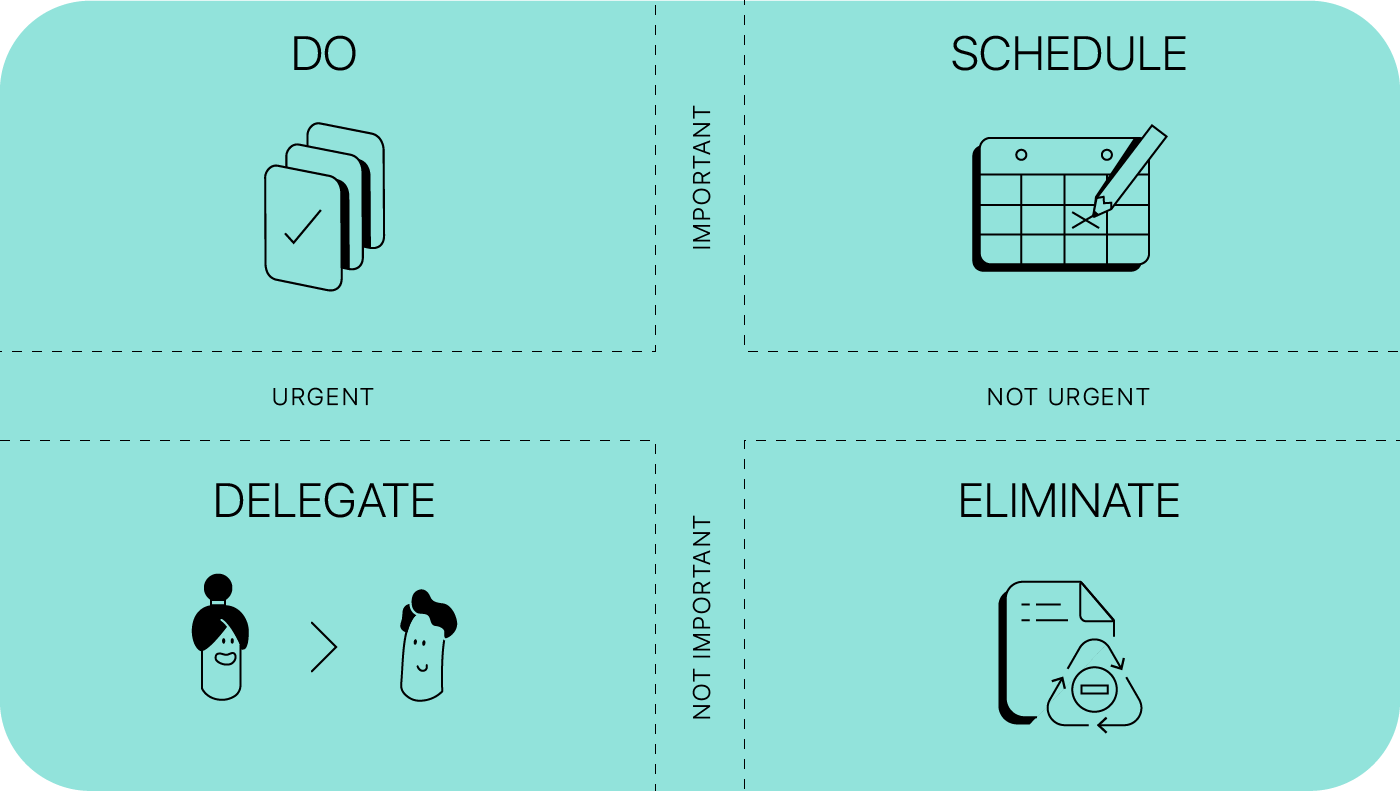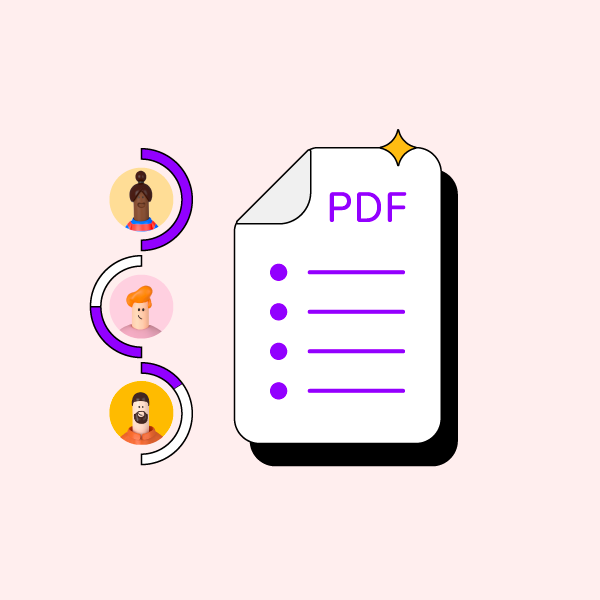Let's assume your boss asked you to submit a very important report by the next board meeting, and you only have a couple of days left to put everything together. Your workload is already high, so adding another thing to your to-do list can cause stress and anxiety around the workspace.
Because of this, you can hardly concentrate, work on your daily tasks, and accomplish measurable results. But how to beat stress and deliver everything necessary on time? The Eisenhower decision matrix can give you a hand by differentiating core activities from distractions.
What Is the Eisenhower Matrix?
The Eisenhower Matrix is a convenient tool that allows you to distinguish urgent and not-so-urgent tasks. It categorizes assignments based on urgency and importance by splitting them into four boxes: urgent, not urgent, delegate, and delete.
This tool can also be referred to as Urgent-Important Matrix or Eisenhower Box. President Dwight Eisenhower developed this concept, which he used to prioritize numerous high-stake issues while he was a general in the US Army, and, later on, the President of the United States.
A few decades later, author Stephen Covey used the Eisenhower words in his book and turned them into the Eisenhower Matrix. As a result, this tool has become widely popular and used in project management.
Eisenhower Method
The Eisenhower method is designed to help you organize a list of tasks based on their urgency and importance. Applying this layout allows you to separate urgency and importance while avoiding conflict.
To ensure staying on top of things, the Eisenhower method helps you quickly determine what needs to be done first and focuses on pressing matters. The former president used to have a saying: "I have two kinds of problems, the urgent and the important. What is important is seldom urgent, and what is urgent is seldom important."
This is the main idea of the Eisenhower method, and below we will explain how you can apply it to your tasks.
Important vs. Urgent Matrix
The core principle of the Eisenhower matrix is distinguishing between important and urgent tasks.
Urgent tasks—time-sensitive tasks that require immediate attention. Usually, you feel a strong need to address them. Every time you focus on urgent tasks, you enter a reactive mindset, which makes you narrowly focused, rushed, and defensive. Dealing with an urgent client request could be an example of an urgent task.
Important tasks—they contribute to long-term goals, values, and mission. They might not generate immediate results, so it makes sense to neglect them. Occasionally, important tasks are also urgent.
When focusing on important tasks, you enter a responsive mindset, which makes you feel rational, calm, and open to new ideas. Regular choirs and maintenance projects can be an example of important tasks.
Remember that if you put off important tasks for too long, they will become urgent over time. People also are under a misconception that all urgent tasks are also important, which isn't the case. This might come from the fact that people like to deal with short-term problems and solutions.
How To Deal With Procrastination?
You can deal with procrastination in a few ways.
Usually, there are two types of tasks, the ones you can't foresee and the ones you can procrastinate. When planning your list, think about the assignments you left for the last minute and plan how to avoid procrastinating in the future.
It is also important to determine when you will tackle each task. Establish clear deadlines and incorporate these activities into your schedule. Make sure you have enough time to complete them according to the highest standards.
To overcome this issue, check out ActiveCollab to create custom solutions, which you will use to prioritize tasks.
Eisenhower's Time Management Matrix
Having a long to-do list can be overwhelming and stressful. However, Eisenhower's time management matrix helps you tackle these tasks one by one and separate them by quadrants.
- Quadrant 1 – Do. Here you will place all tasks that are both urgent and important. Place a task into this quadrant when it has to be done now, affecting your long-term goals and causing clear consequences.
- Quadrant 2: Schedule. In Quadrant 2, place all the tasks that aren't urgent but are still important. Considering they affect your long-term goals, they don't have to be addressed immediately, and you can schedule them for later.
- Quadrant 3: Delegate. Urgent but not important tasks go into Quadrant 3. While they have to be completed now, these tasks don't affect your long-term goals. You could delegate tasks to other team members since they don't require your specific skill set to complete.
- Quadrant 4: Delete. After going through the previous quadrants, you will notice plenty of tasks are left. They aren't urgent or important, and they are simply in your way of accomplishing your goals. Therefore, you should place them in the fourth "delete" quadrant.
Levels of Importance
The Eisenhower matrix helps you identify activities you should focus on; in other words, establish the level of importance and know which tasks to ignore. You should use this tool when you want to prioritize your time.

You can deal with an urgent matter, but at the same time work toward long-term goals. We already mentioned four quadrants, and you use them to schedule activities and tasks according to their urgency and importance.
Box Planning
You can use the Eisenhower matrix to plan your activities. You should already know which activity goes in which quadrant, but we will try to give you some examples to make this box planning easier.
- Quadrant one: Respond to the client's email
- Quadrant two: Go to a networking event
- Quadrant three: Transcribe meeting notes
- Quadrant four: Share status approvals
Elimination Before Optimization
The fastest way to get something done is by eliminating the task completely. If you apply this principle, you force yourself to make a tough decision and eliminate any tasks that don't lead you toward your goals, values, or mission.
We often use optimization, time management, and productivity as an excuse to avoid challenging questions. We tend to remain busy and convince ourselves that we need to be a bit more efficient or stay overtime than go through the pain of eliminating the task we really like, even though this task isn't the best use of our time.
This is where the Eisenhower matrix comes in. It pushes you to question the relevance of certain tasks. So, instead of repeating them, these assignments should go into the "delete" quadrant. You practically eliminate everything that makes you waste your precious time.





